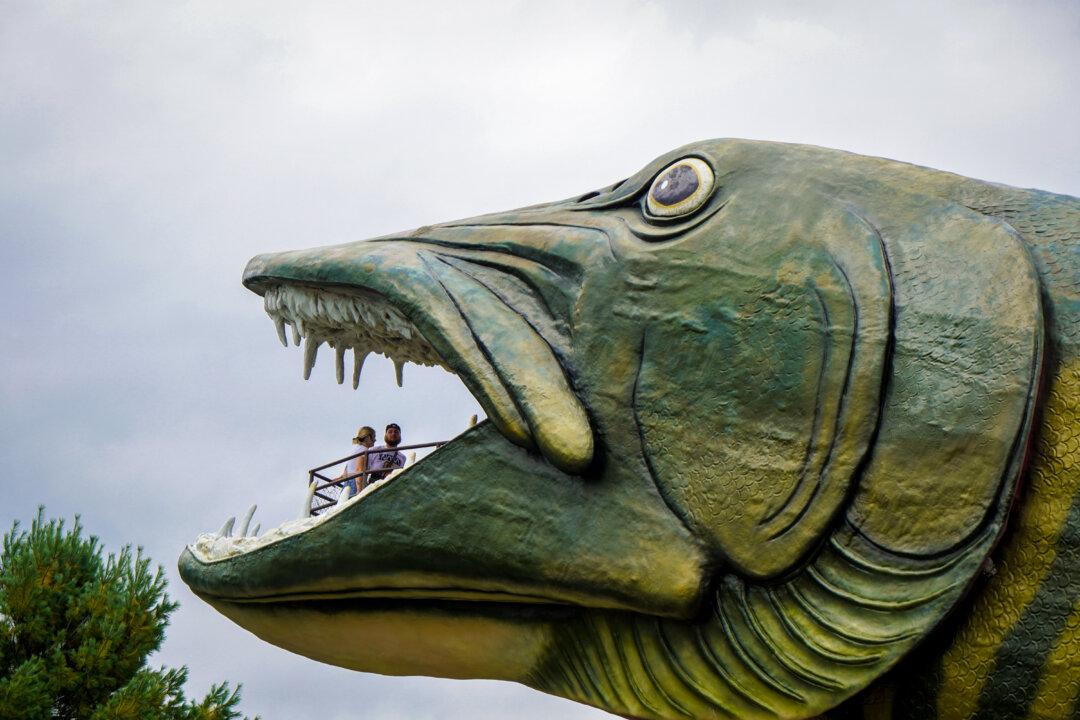
People stand in the mouth of the Giant Muskie statue at the Fishing Hall of Fame in Hayward, Wis., on Sept. 20, 2021. JACKSON ELLIOTT/The Epoch Times
America’s rugged landscape and endless horizons seem to call to the inner pioneer of people who want to see the world’s strangest places.
Somehow, the World’s Biggest Ball of Twine Made by One Man, located in Darwin, Minnesota, also appeals to that exploring spirit.




